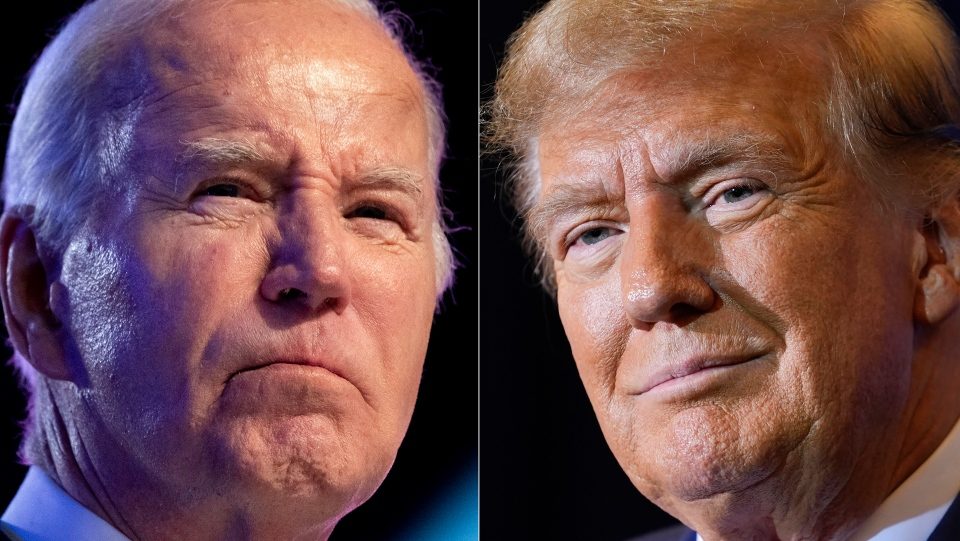Discover the US Election overview, swing states’ importance, Political parties’ coalitions, and insights into the 2024 election, its candidates, key issues, and timeline.
This article provides a concise overview of U.S. presidential elections, emphasizing demographics, historical shifts, swing states, and highlights of the anticipated 2024 rematch between President Biden and Donald Trump.
Additionally, we cover the key aspects of the U.S. Presidential Elections process, potential candidates, and key election issues.
US Election Overview
The U.S. presidential elections, a cornerstone of the nation’s democratic process, have a rich history marked by evolving demographic trends, political shifts, and changing cultural norms. In the contemporary era, most states tend not to be competitive due to demographics consistently favoring one of the major parties.
Historical Overview of U.S. Presidential Elections
Historically, the Democratic and Republican parties have formed distinct coalitions. The Democratic electoral coalition, which typically secures the “blue states,” performs best among Jewish and Black voters, as well as Whites who have attended college or reside in urban areas.
The coalition has undergone changes over time. While working-class voters were once a mainstay of the Democratic coalition since the days of the New Deal, many have migrated to the Republican party as the Democrats moved to the left on cultural issues.
Conversely, the traditional Republican coalition, which dominates many “red states,” is mainly composed of rural White voters, evangelicals, the elderly, and non-college educated voters. Republicans have historically performed well with suburban, middle-class voters since the 1950s.
However, this group has drifted away from them in recent years due to the rise of movements such as the Tea Party and the Make America Great Again campaign.
The Significance of Swing States in Elections
The importance of swing states in U.S. presidential elections cannot be overstated. These competitive states that “swing” between the Democratic and Republican parties are crucial to clinching the presidency.
1. Democratic Party
Democratic Party has a long history dating back to the early 19th century and has been instrumental in shaping the nation’s political landscape.

The party champions a range of issues including social justice, healthcare reform, and climate change. Notable figures include President Joe Biden and Vice President Kamala Harris.
2. Republican Party
Known as the GOP (Grand Old Party), Republican Party supports a conservative and right-leaning platform, advocating for lower taxes, free-market capitalism, a strong national defense, gun rights, deregulation, and restrictions on labor unions.

Notable figures include past Presidents like Abraham Lincoln, Ronald Reagan, and most recently, Donald Trump.
The current swing states include those in the Rust Belt, such as Wisconsin, Michigan, and Pennsylvania, and in the Sun Belt, including Nevada, Arizona, and Georgia. North Carolina is also perceived as a battleground state, given its close result in recent elections.
The Upcoming 2024 United States Presidential Election
The upcoming 2024 United States presidential election is particularly noteworthy. This will be the first presidential rematch in American history since 1956. Incumbent President Joe Biden, a member of the Democratic Party, is running for re-election.
His predecessor, Donald Trump, a member of the Republican Party, is also running in hopes of securing a second, non-consecutive term after losing to Biden in 2020. If Trump wins, he would join Grover Cleveland as the only presidents to serve non-consecutive terms.
Key Aspects of U.S. Presidential Elections Process
Significant Electoral Events Concurrent with Presidential Race
Alongside the presidential race, the election period will witness a series of other significant electoral events, including elections for the U.S. Senate, House, gubernatorial, and state legislative positions.
The campaign trail is expected to be dominated by a variety of pivotal issues, including abortion, immigration, healthcare, education, the economy, foreign policy, border security, LGBT rights, climate change, and democracy.
Constitutional Requirements and Limitations for Presidential Candidates
The eligibility for the presidency is guided by the U.S. Constitution. It stipulates that for a person to serve as president, they must be a natural-born citizen of the United States, be at least 35 years old, and have been a United States resident for at least 14 years.
Further, the Twenty-second Amendment forbids any person from being elected president more than twice.
Introduction to the US Election 2024

The United States will hold its 60th quadrennial presidential election on Tuesday, November 5, 2024. This highly anticipated event will see voters from across the nation come together to elect a president and a vice president for a term of four years.
Key Candidates and Historical Significance
The current President, Joe Biden, a member of the Democratic Party, has announced his intention to run for re-election. He is set to face his predecessor, Donald Trump, a member of the Republican Party, who is also vying for the presidency.
Interestingly, this is the first presidential rematch since 1956, adding a unique historical significance to the election.
The presidential election will not be the only political event taking place on November 5, 2024. Elections related to the U.S. Senate, House, gubernatorial, and state legislative are also scheduled to occur.
Concurrent Elections and Potential Impact
The results of these concurrent elections will determine the composition of the 119th United States Congress and the leadership in thirteen state and territorial governorships. Following the election, the successful presidential candidate is expected to be inaugurated on January 20, 2025.
It would not exaggerated to say that the 2024 election promises to be a pivotal moment in American history, shaped by the candidates, their policies, and the will of the voters.
Potential Candidates

Democrats
Joe Biden: Current president and Democratic party candidate, Biden is running for reelection. Despite low approval ratings, he emphasizes defense of American liberties and democracy.
Marianne Williamson: Self-help guru and author, she has restarted her long-shot bid for the Democratic nomination on a platform of “justice and love”.
Jason Palmer: An entrepreneur with Microsoft and Bill & Melinda Gates Foundation experience drew with President Biden in American Samoa, securing half the delegates and beating the president by 11 votes. Palmer’s campaign prioritizes education, healthcare, climate change, and immigration.
Republicans
Donald Trump: Former president from 2017-2021, seeking another term with the Republican party. His legal challenges and strong rhetoric have solidified his base, and he’s made immigration a top campaign issue.
Independent and third-party
Robert F. Kennedy Jr: Anti-vaccine activist and environmental advocate, Kennedy is running as an independent, possibly drawing votes from both Trump and Biden.
Cornel West: The political activist, philosopher and academic has launched a third-party bid likely to appeal to progressive, Democratic-leaning voters.
Jill Stein: Stein, a physician, is running again with the Green Party, criticizing both Democrats and Republicans for their failure to meet promises to working people, youth, and the environment.
Key Election Issues
A potential Biden versus Trump election rematch carries significant implications. It impacts reproductive rights, climate change action, US support for Ukraine, and the future of American democracy.
Here’s a look at why.
The economy has historically been a key factor in U.S. elections. Today, despite a strong post-Covid recovery under Biden with low unemployment and high stock market, polls suggest many Americans prefer Trump’s economic approach.
Concerns about cost of living and inflation persist. While Biden may gain some support by highlighting Republican threats to social security and Medicare, these issues must be downplayed by Trump due to his older base.
Last month, Alejandro Mayorkas, Biden’s homeland security secretary, was impeached by House Republicans. Following Trump’s lead, Senate Republicans thwarted a bipartisan immigration deal. Both Biden and Trump recently visited the southern border.
Biden pointed out Republican roadblocks, inviting Trump to collaborate for a solution. Trump, on the other hand, blamed Biden for border disorder. This pattern is expected to continue.
Ron DeSantis targeted LGBTQ+ rights in his “Make America Florida” campaign, which failed, but the Republicans’ push against “woke” ideology continues. This has led to anti-trans laws, book bans, and limitations on LGBTQ+ education topics, along with ending race-based college affirmative action.
Furthermore, immigration struggles and crime remain Republican focus points, with Trump employing extreme rhetoric. However, Democrats may face challenges as Black and Hispanic support is less certain.
Democrats intend to spotlight Republican assaults on abortion rights, including the supreme court rulings and harsh bans in several states. This strategy, motivated by strong public support for women’s reproductive rights, has already led to several electoral victories.
Despite Republicans’ denial, their actions suggest a willingness to restrict treatments essential for many families. Trump’s appointment of justices who overturned Roe is a point of contention. Expect Biden and Democrats to persistently challenge this issue.
Biden faces a challenge balancing Israel lobby and his party’s left wing, who are more sympathetic to Palestinians. Protests against Israel’s Gaza actions risk alienating his base, as shown by a large protest vote against him in Michigan. Meanwhile, Republicans are solidly pro-Israel.
Internationally, Biden leads support for Ukraine against Russia, but GOP immigration demands stall further US aid. The messy Afghanistan exit, potential China-Taiwan conflict, and Trump’s NATO threat ensure foreign policy remains a contentious issue.
Biden portrays himself as a defender of democracy, emphasizing the domestic threats, especially from Trump, who rejected the 2020 election results, incited the Capitol attack, and has shown autocratic tendencies. Despite Trump’s ongoing claims of election fraud, Biden has found electoral success by focusing on this issue, though some question its impact on everyday citizens.
Climate change is evident in extreme weather events. Polls indicate 70% of Americans, including half of Republicans, want action. However, Republican campaigns don’t reflect this. Trump denies human impact on climate and opposes clean energy efforts. Despite criticism, Biden’s office actions firmly oppose such views.
Election Process and Timeline
The timeline below outlines the key events in the election process since April 2024. The stages include primary elections, party conventions, presidential debates, Election Day, and the formal counting of electoral votes. The process concludes with Inauguration Day in January 2025.
April 2024
- April 2: Democratic and Republican primaries in Connecticut, New York, Rhode Island, and Wisconsin.
- April 10: Cornel West announces Melina Abdullah as his running mate.
- April 13: Democratic caucuses in Alaska and Wyoming.
- April 15: The trial for New York v. Donald Trump begins.
- April 18–20: Wyoming Republican primary.
- April 21: Puerto Rico Republican presidential primary.
- April 23: Pennsylvania Democratic and Republican primaries.
- April 24–27: The Constitution Party National Convention in Salt Lake City, Utah.
- April 25: The trial for Trump v. United States begins.
- April 28: Puerto Rico Democratic primary.
May 2024
- May 7: Indiana Democratic and Republican primaries.
- May 10: The trial for United States v. Donald Trump, Waltine Nauta, and Carlos De Oliveira begins.
- May 14: Democratic and Republican primaries in Maryland, Nebraska, and West Virginia.
- May 21: Democratic and Republican primaries in Kentucky and Oregon.
- May 23: Idaho Democratic caucuses.
- May 24–26: The Libertarian National Convention in Washington, D.C.
June 2024
- June 4: Democratic and Republican primaries in the District of Columbia, Montana, New Jersey, New Mexico, and South Dakota.
- June 8: Democratic caucuses in Guam and the U.S. Virgin Islands.
July 2024
- July 11–14: The Green National Convention online.
- July 15–18: The Republican National Convention in Milwaukee.
August 2024
- August 19–22: The Democratic National Convention in Chicago.
September 2024
- September 16: The first presidential debate at the Texas State University in San Marcos, Texas.
- September 25: The only vice presidential debate at the Lafayette College in Easton, Pennsylvania.
October 2024
- October 1: The second presidential debate at the Virginia State University in Petersburg, Virginia.
- October 9: The third presidential debate at the University of Utah in Salt Lake City, Utah.
November 2024
- November 5: Election Day.
December 2024
- December 11: The “safe harbor” deadline under the Electoral Count Act.
- December 17: The electors meet in their respective state capitals and the District of Columbia to formally vote for president and vice president.
January 2025
- January 6: Electoral votes formally counted before a joint session of Congress; the president of the Senate formally announces the electoral result.
- January 20: Inauguration Day.
Predictions and Polls: US Election Overview
Predictions for the US Election 2024 indicate a tight race between Joe Biden and Donald Trump. Current polls show Trump leading in numerous instances.
Trump Leads in Various Polls
For example, a pair of polls from McLaughlin and Associates showed Trump ahead of Biden by six points and four points, respectively. Similarly, a Reuters/Ipsos poll of 4,094 adults showed Trump leading 32% to 31%. In other Reuters/Ipsos polls, Trump also held a narrow lead.
However, there have been instances where Biden has an edge. A March 19 YouGov/Economist poll of 1,510 voters showed Biden leading Trump 44% to 43%, and a March 17 Florida Atlantic University/Mainstreet poll of 941 likely voters showed Biden leading 47% to 45%. In a third Reuters/Ipsos poll, Biden led Trump 43% to 38%.
Instances Where Biden Holds the Edge
In other polls, the candidates appear evenly matched. A March 17 Morning Consult poll of 5,777 voters had Biden and Trump tied at 43%. Expanded to encompass all adults, a Florida Atlantic/Mainstreet poll showed the men tied at 44%.
In the nine most recent head-to-head matchups in FiveThirtyEight’s polling aggregate, Trump leads Biden in nine and is tied in three. Trump’s largest margin came from a March 17 Grinnell College poll of 704 voters that found him leading Biden by seven points.
The Predictions of Political Pundits
Despite Trump’s lead in polls, political pundits predict that Biden may secure a second term. They base this on factors such as Biden’s record, the strength of the Democratic Party, and Trump’s legal and financial challenges.
However, some pundits acknowledge Trump’s potential to return to the White House, considering his victories throughout the GOP primaries.
Impact of International Policy on US Elections
International policy can significantly impact the outcome of US elections.
Impact of Biden’s Ukraine Policy on US Elections
For instance, Biden’s stance on the Ukraine conflict and his approach towards China could influence voters’ perception and their voting decisions.
While many Americans support Ukraine against Russia, Trump’s isolationist approach resonates with those wary of endless conflict. Therefore, how Biden handles the Ukraine situation could sway voters.
Biden’s Approach Towards China and Voters’ Perception
Similarly, Biden’s approach towards China, while economically strategic, leaves him vulnerable to criticism from those who view China as a critical threat. This could impact voters’ decisions, especially if they perceive his approach as too lenient.
Gaza Crisis and Biden’s International Policy Challenges
Furthermore, the crisis in Gaza also adds to Biden’s international policy challenges. While Biden may be working to curtail the military policies of the Israeli government, the perception among certain American demographics, such as the young, Arab-Americans, and even within his party, is that his actions are insufficient.
All of which could influence voting decisions, especially if these groups perceive Biden’s support for Israel’s military campaign negatively.
Conclusion – US Election Overview
In conclusion, the U.S. presidential elections are a complex interplay of historical trends, demographic shifts, and evolving political and cultural issues.
The upcoming 2024 election is set to be a significant event, with a potential rematch between President Joe Biden and his predecessor, Donald Trump.
Their stances on various national and international policies, coupled with the influence of key demographic groups, will shape the course of the election. Regardless of the outcome, this election promises to be a pivotal moment in American history.
| DISCLAIMER: The information on this website is provided as general market commentary and does not constitute investment advice. We encourage you to do your own research before investing. |
























